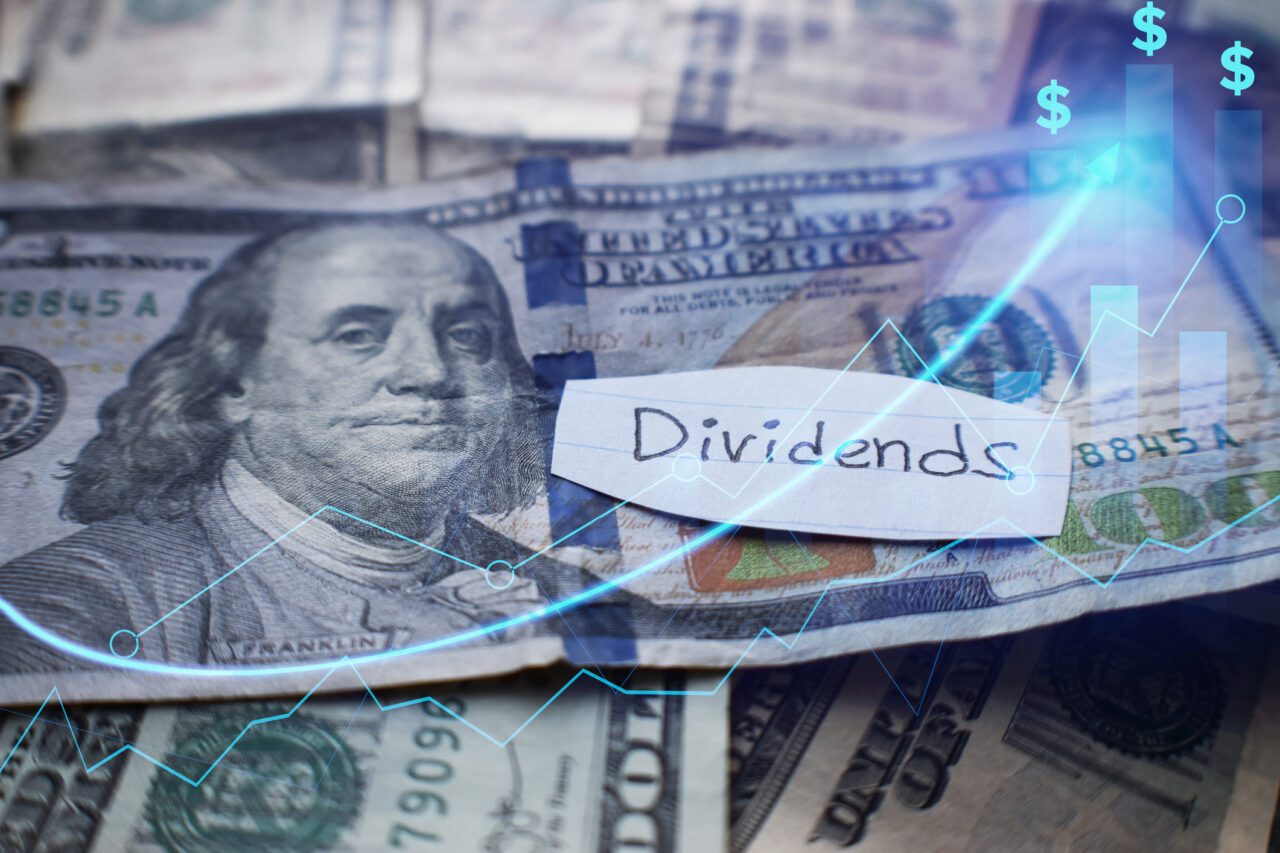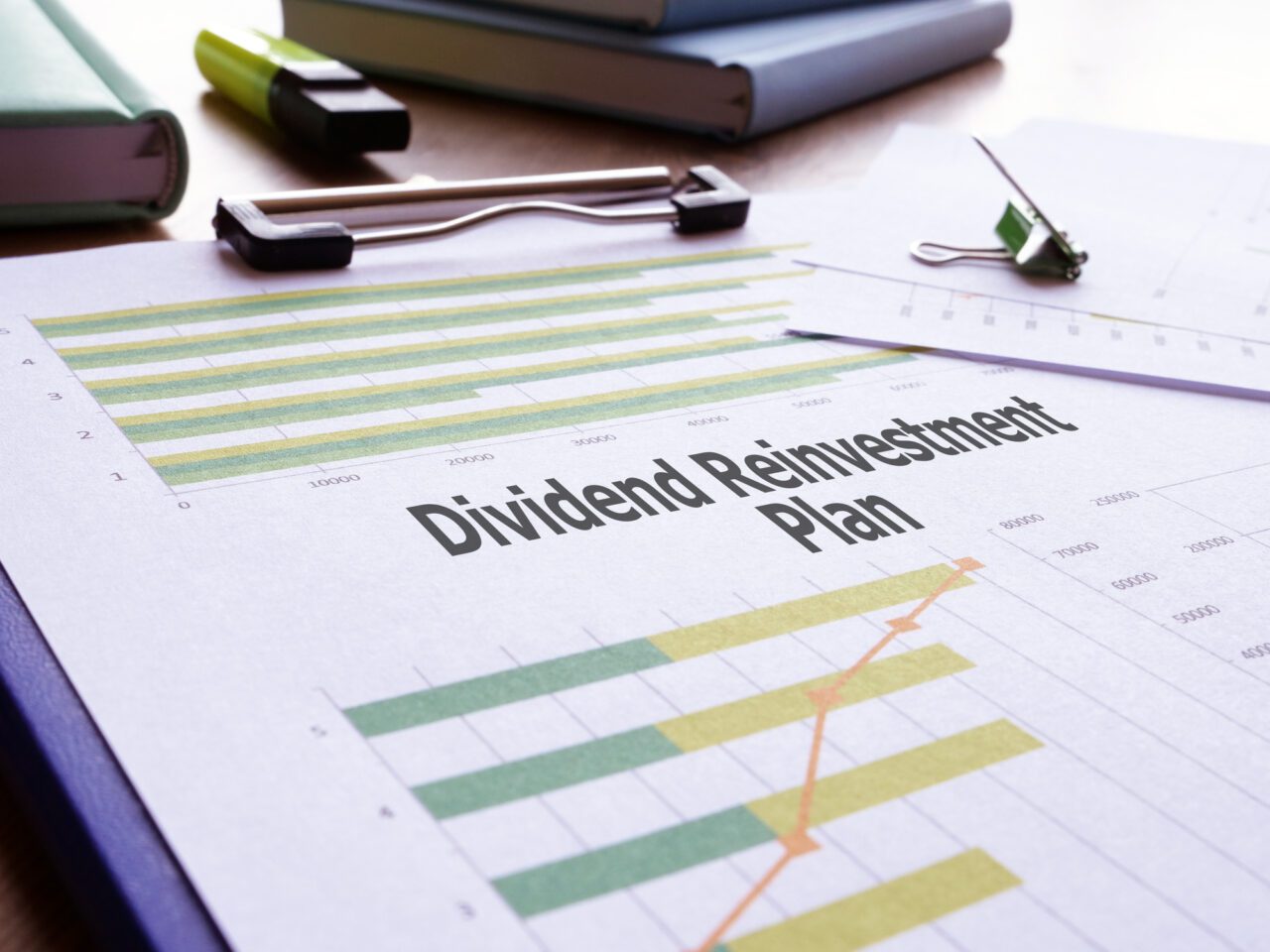Dividend payments are a great way to generate income for investors. But should dividends be reinvested? That answer depends on your investing goals. By reinvesting dividends, you can potentially increase your returns and grow your portfolio over time. But is reinvesting dividends right for you? Here are the pros and cons of reinvesting dividends to help you make an informed decision.
Dividend Basics
Before discussing dividend reinvestment, let’s briefly review the basics of dividends. Knowing what they are to how they are calculated can benefit the new investor.

What are dividends?
What are Dividends?
A dividend is a payment made by a company to its shareholders via a dividend-paying stock, typically out of its earnings or profits. They are essentially a share of the company’s profits proportional to the size of the shareholder’s investment. Dividends can be paid out in cash, additional shares, or other forms.
Why Pay Dividends?
Companies pay dividends to reward shareholders for investing in them, encouraging them to invest more or buy additional shares. Companies that regularly pay dividends may be seen as more stable and financially sound than ones that don’t. Stability in a company usually attracts more investors. Paying dividends can also help smooth out fluctuations in a company’s stock price, as regular payments provide investors with a steady income.
How are Dividends Calculated?
Dividends are typically expressed as a percentage of a company’s stock price, known as the dividend yield. For example, if a stock trades at $100 and pays an annual dividend of $2, its dividend yield is 2%. Dividends are usually paid out quarterly, but some companies pay them monthly or annually. The dividend amount can also vary – some companies may increase or decrease their dividend payouts based on their earnings or other financial factors.
What is Dividend Reinvestment?
Dividend reinvestment is a process where the dividends earned by an investor are automatically used to purchase additional shares in the same company. This means investors receive more company shares instead of cash payouts from the company, which can compound and grow over time. This process can be done by individuals (like small investors) or offered by the company as a dividend reinvestment plan (DRIP).
Dividend reinvestment provides an excellent way to build long-term wealth. While cash payouts from dividends may seem attractive, reinvesting those dividends instead can lead to significant long-term gains. For example, an investment of $10,000 in a company that pays a 3% annual dividend and reinvests those dividends for 30 years could potentially yield over $34,000 in additional gains (this assumes an annual rate of return of 8%).

What’s a dividend reinvestment plan?
What are Dividend Reinvestment Plans (DRIPs)?
A dividend reinvestment plan, or DRIP, is often offered by companies as a way to incentivize long-term investors. Sometimes, a company may also offer discounts on reinvested shares or waive certain fees associated with the program. However, DRIPs can also be set up through brokerage accounts, which means investors can opt-in to DRIPs for stocks they have purchased through their broker. For investors who prefer a more passive approach to investing or who may not have the time to actively manage their portfolio, DRIPs can be an attractive option.
Are There Benefits of Reinvesting Dividends?
Reinvesting dividends can have significant benefits in the long run. Here are 4 benefits to reinvesting your dividends.
1 – Boost Your Returns
One of the primary benefits of reinvesting dividends is the potential for compounded returns. When you reinvest your dividends, you’re essentially buying more shares of the company’s stock with that cash. This means you’ll own more shares, which can lead to a larger dividend payment in the future. These reinvested dividends will begin to compound, potentially leading to significant gains over time. For example, let’s say you own 100 stock shares that pay a $1 dividend per share. If you reinvested those dividends for 20 years and the stock price grew at a rate of 8% per year, you would end up with over 500 shares and a total return of over 600%.
2- Lower Commission Costs or Brokerage Fees
When you reinvest dividends, you typically don’t have to pay additional fees or commissions (although it’s important to check with your broker). This can help keep your costs down over time, which can be especially important for long-term investors.
3 – Dividend Reinvestment has its Tax Benefits
Reinvesting dividends can be a tax-efficient way to invest, depending on your tax situation. When you reinvest dividends, you typically don’t have to pay taxes on those dividends immediately. Instead, you’ll owe taxes on the dividends when you eventually sell the shares. This can be beneficial if you’re in a high tax bracket, as it can defer some of your tax liability.
4- A Great Way to Stay Invested in the Market
Finally, reinvesting dividends can be an easy way to stay invested in the market, even when things get hectic (also known as dollar-cost averaging). When you automatically reinvest dividends, you invest a fixed amount of money regularly, regardless of the share price. This can help smooth out the highs and lows of the market, potentially leading to more stable investment returns over time. What’s more, by setting up automatic dividend reinvestment with your broker, you can take advantage of compounding returns without constantly monitoring your portfolio or making manual investment decisions.
When Should You Not Reinvest?
There are times when reinvesting dividends may not be the best choice. Here are three situations where you may choose to avoid automatic dividend reinvestment.
1 – You Need Cash Flow
If you rely on your investments for dividend income or are nearing retirement and need liquid cash, reinvesting dividends may not be the best decision for you. The funds used to purchase additional shares could instead be used to cover expenses or be put into a savings account, providing a steady source of income as needed. By choosing not to reinvest, you can access capital when income may drop, such as unexpected medical bills or sudden layoffs.
2- Your Portfolio is Heavy on a Particular Stock
Sometimes, investors can hold a significant amount of a particular stock. This could be due to stock options given by an employer or a company you believe in. Continuing to reinvest dividends in the same stock can lead to an unbalanced portfolio and increase the risk potential. Instead, evaluating and diversifying your holdings can create a more balanced financial portfolio to decrease risk.
3- When the Stock is Overvalued
Stocks can sometimes become overvalued, meaning their prices have exceeded what the company’s earnings justify. In such cases, reinvesting dividends will only overinflate the stock price. In this instance, investors may want to consider selling the stock or not investing in it in the first place.

Choosing when you should reinvest dividends can depend on your situation
Conclusion
Reinvesting dividends can be a powerful tool for growing your investment portfolio. It’s important to weigh the pros and cons and determine if it aligns with your investment goals and risk tolerance. Consider the tax implications and the company’s dividend payment history before reinvesting dividends. With careful consideration, reinvesting dividends may be a smart move toward achieving your long-term investment goals.
Helpful articles: